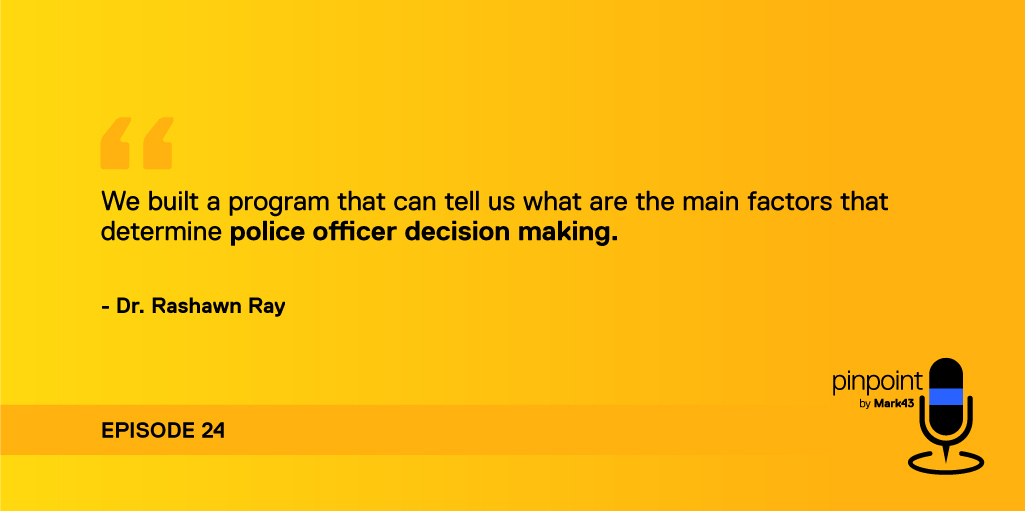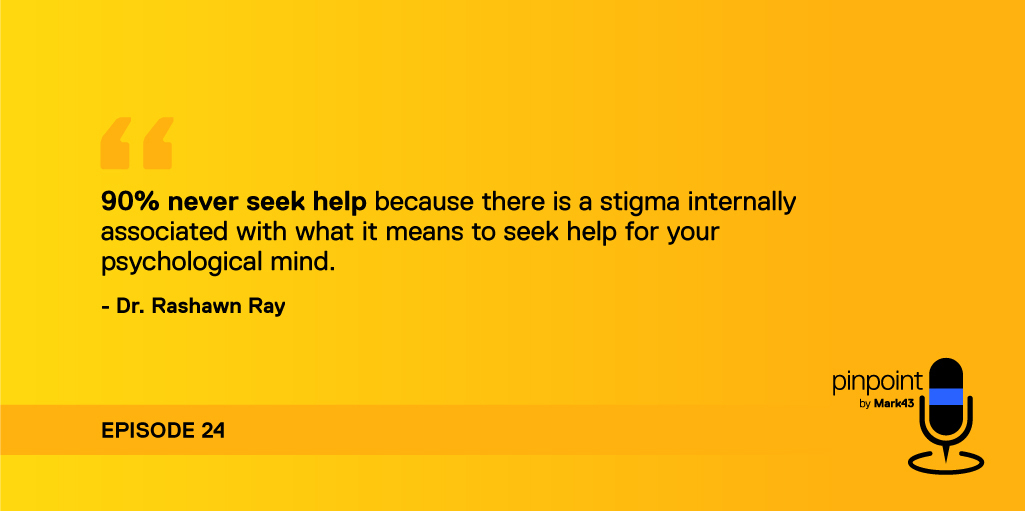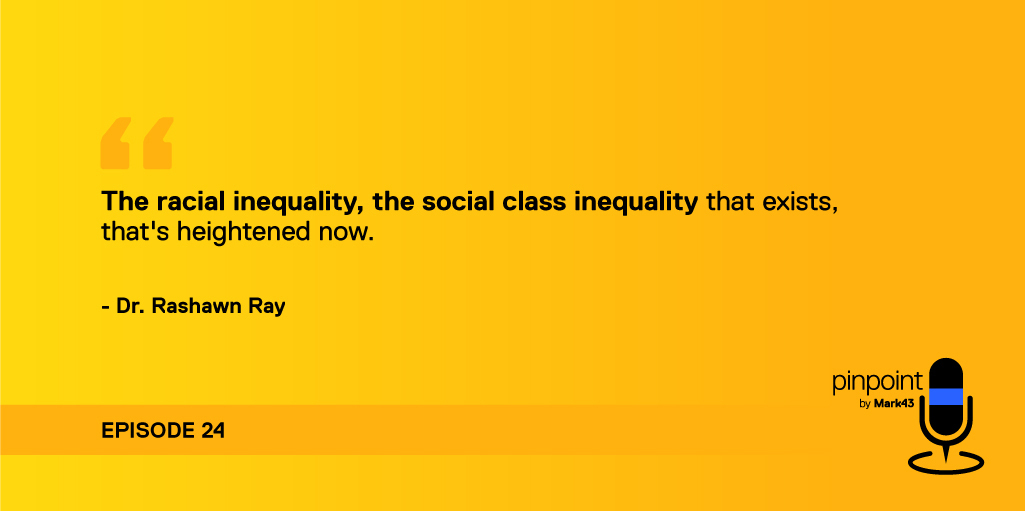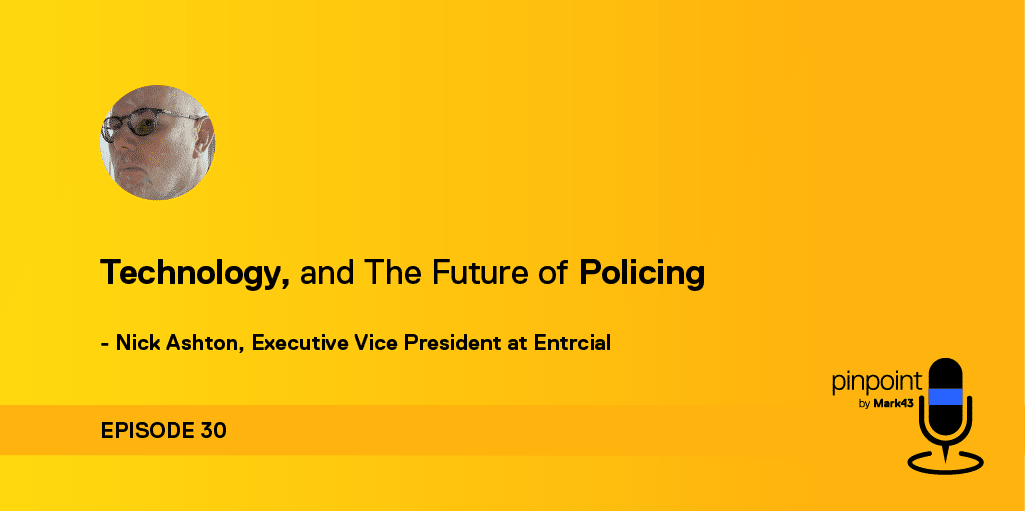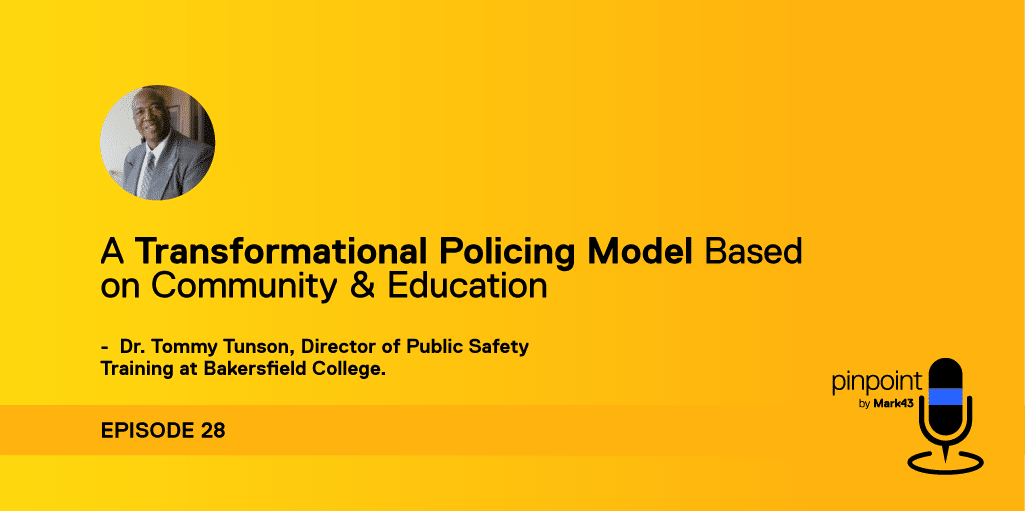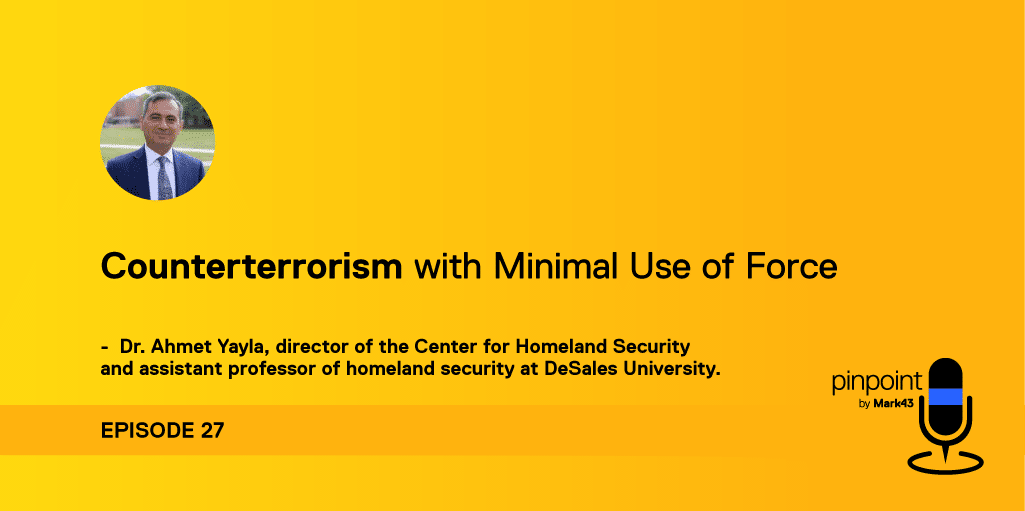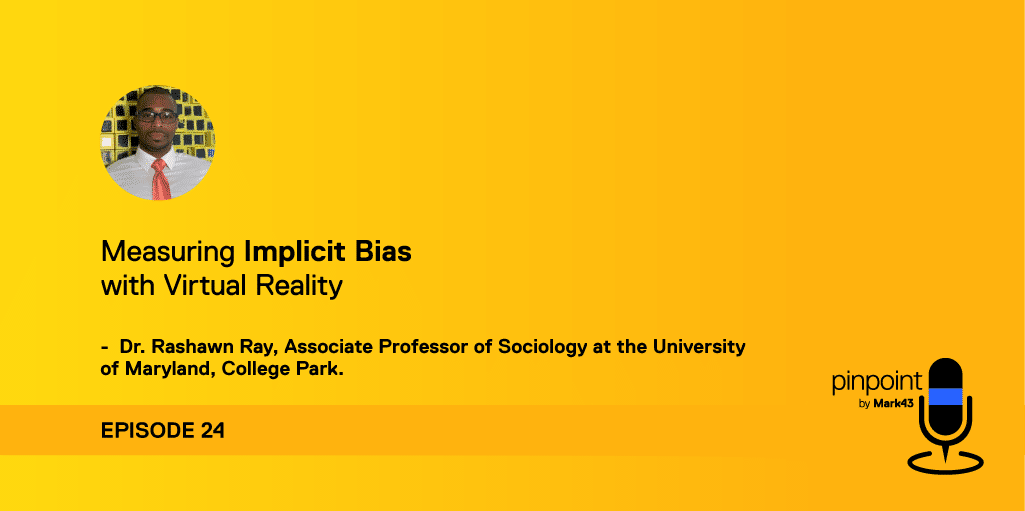
1 in 5 officers report chronic stress.
1 in 6 officers report alcohol abuse.
Yet 90% of officers don’t seek help for mental health.
On a recent episode of Pinpoint, I interviewed Dr. Rashawn Ray, Associate Professor of Sociology at the University of Maryland, College Park and David M. Rubenstein Fellow at the Brookings Institute. We talked about identifying implicit bias and normalizing mental health as ways to help citizens and officers get home safely.
[popup_trigger id=”1576″ tag=”pinpoint”]
[/popup_trigger]
Dr. Ray credits his impressive research and publication background to his family history of law enforcement and military service: his great uncle was the first black chief in his hometown, his grandfather served 21 years in the military and was awarded a Purple Heart, and his mother was admitted to West Point as a black woman in the seventies.
From a research project on obesity, Dr. Ray noticed that black men were less likely to engage in physical activity in predominantly white neighborhoods. “Their blackness becomes a signal or a social script for criminality,” he said.
In tracing the impact of this social script, Dr. Ray began to offer implicit bias training with police departments around the country and has been researching and publishing on this topic for the last decade.
VR and implicit bias
As Executive Director of the Lab for Applied Social Science Research (LASSR), Dr. Ray pioneered a virtual reality project that explored the use of virtual reality and better understanding implicit bias in cooperation with Prince George’s County police department in Maryland.
The virtual reality course measures implicit bias about race, class, place, gender, and age. “We built a program that can tell us what are the main factors that determine police officer decision making,” Dr. Ray said.
The virtual reality scenarios might present a police officer with an apartment complex setting, a person with hearing impairment, and empty hands–or a cellphone, knife, or gun. It measured how the officers reacted to the virtual reality program by measuring heart rate, stress level, reaction time, eye movement, and body movement.
Two general findings:
- Officer experience affects officer reactions, meaning that those who are more experienced are more stable.
- Police officers are more likely to associate weapons with black people relative to white people.
“It isn’t a black officer thing or a white officer thing,” Dr. Ray said. “I really think it’s just a people thing.”
The program has expanded to over a dozen police departments around the country.
“We take those findings and then tailor an inclusive bias training to each department,” he added.
Conclusions from the data
Structural changes
“The biggest things that we took away from working with Prince George’s County, honestly, had nothing to do with the findings,” Dr. Ray said. “It had to do with the bureaucracy and organizational structure of police departments.”
Implementing police accountability changes is dependent on changing the organizational structure of policing.
The first problem? Police officers aren’t held accountable to the communities they serve. They’re held accountable to each other internally.
Dr. Ray advocates for a change in that internal process to something more closely resembling physician accidental malpractice. A corollary would be restructuring how we handle civilian payouts for police misconduct.
“In a lot of places around the country, particularly the largest metro areas, most police officers can not afford to live where they work,” Dr. Ray pointed out.
He suggested a housing stipend for police officers within the first several years of service to mandate they live in the neighborhood where they work. “Now the community doesn’t become ‘the people where I work, that’s their community,’ it becomes my community, too,” he said.
Officer mental health
“When we were doing our interviews of 200 police officers, the big thing we discovered was how exhausted they were — and how stressed out they were,” Dr. Ray said.
- A recent study found that about 80% of police officers report chronic stress.
- One out of 6 reports alcohol abuse.
- One out of 6 reports having suicidal thoughts.
“90% of them never seek help because there is a stigma internally associated with what it means to seek help for your psychological mind,” Dr. Ray said.
In many police departments, when someone sees psychological services, a note is placed in their file — which doesn’t help promotion or lateral move to a specialty unit.
“We change it by normalizing psychological services,” he said.
Officers should be mandated to seek psychological services every 90 to 120 days. This will make such notes in the file as signs of an ordinary checkup.
As well, the psychological services could be taken out of police departments and returned to the local community. Psychological information could still be sent to the department about 4 times a year, but the officer could be receiving the services more often.
Policing under COVID-19
Dr. Ray sees the COVID-19 pandemic as a crisis that exacerbates inequalities that already exist.
“The racial inequality, the social class inequality that exists, that’s heightened,” he said.
Police officers are now overexposed as frontline workers. Not only should they be getting paid overtime, but they should also be getting hazard pay.
“Part of getting hazard pay means they are putting themselves at risk of potentially dying, and of course police officers do that everyday,” he said.
Police officers are at further risk now than ever before, and they deserve even more support.
Learn more about Dr. Ray’s studies from his book, How Families Matter (with Pamela Braboy Jackson).
This blog post was taken from a Pinpoint podcast interview with Dr. Rashawn Ray of the University of Maryland, College Park. Suggest Pinpoint podcast topics at pinpoint@mark43.com.
For every episode, click here. For Apple Podcasts users, use this link.



